Solanum elaeagnifolium, Silverleaf Nightshade
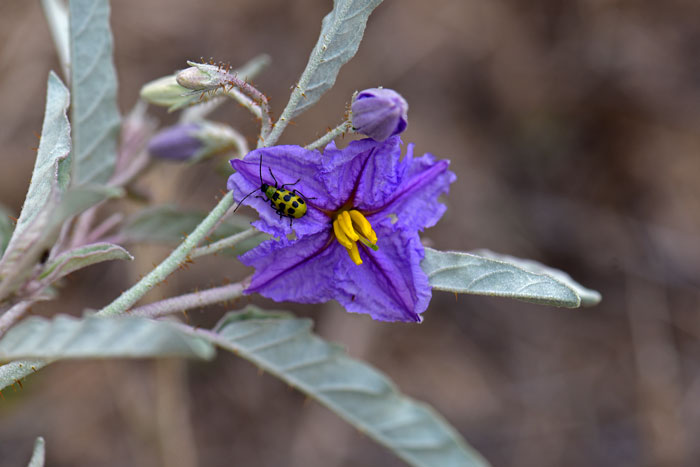
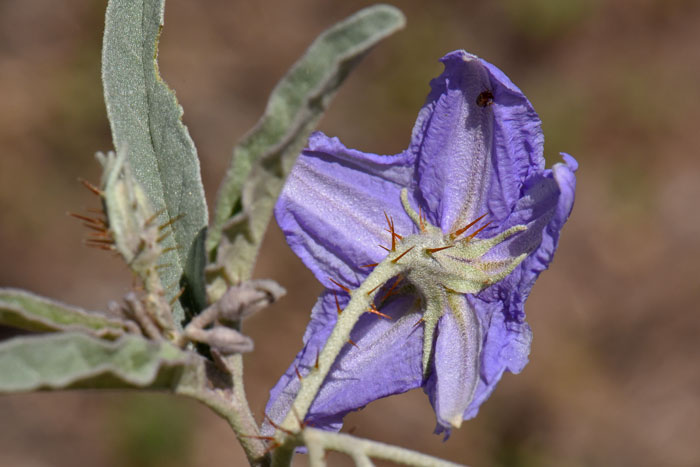
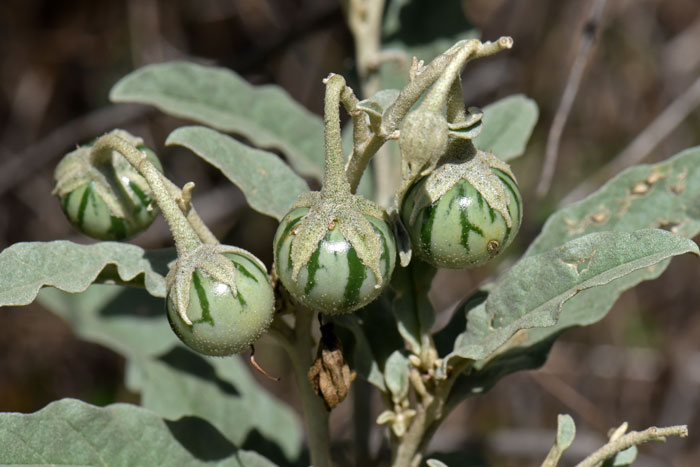
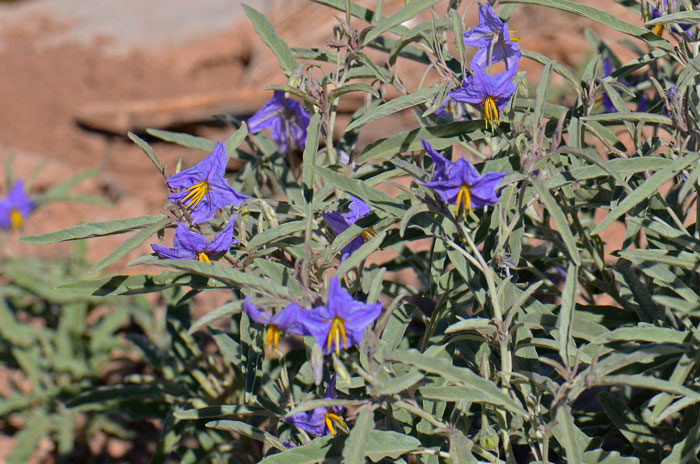
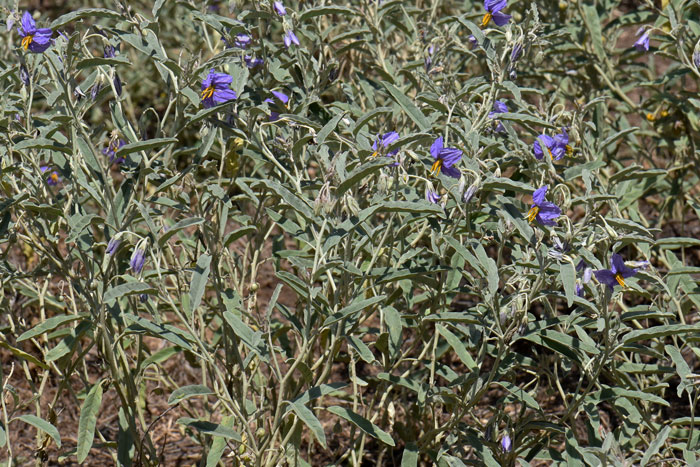
Scientific Name: Solanum elaeagnifolium
Common Name: Silverleaf Nightshade
Also Called: Bull Nettle, Silver-leaf Nightshade, Tomato Weed, Trompillo, White Horsenettle, White Horse-nettle, White Nightshade (Spanish: Buena Mujer, Tomatito de Buena Mujer, Trompillo, Pera)
Family: Solanaceae, Nightshade or Potato Family
Synonyms: ()
Status: Native
Duration: Perennial
Size: Up to 3 feet tall.
Growth Form: Forb/herb, subshrub; herbage (silvery) densely and minutely whitish-lepidote, spines relatively short but very sharp; clones from creeping rhizome rootstock.
Leaves: Greenish-blue, silvery; margins entire to coarsely sinuate-dentate; leaves up to 6 inches long, oblong; may become yellowish.
Flower Color: Purple, blue, violet; inflorescence raceme-like; corolla from ¾ to 1 inch wide, anthers yellow or orange, often persistent, corolla with 5 lobes joined at the base; calyx does not develop around the fruit (no papery covering); fruit small globose or globular yellow poisonous berries.
Flowering Season: May to October; May to September in California; April to October in Texas.
Elevation: 1,000 to 5,500 feet; below 4,000 feet in California.
Habitat Preferences: Fields, roadsides, dry disturbed places and weedy in irrigated lands (AZ, CA); elsewhere in prairie, plains, meadows, pastures and savannas.
Recorded Range: In the United States Solanum elaeagnifolium is found in western and central southern states and in ID, OR, WA. It is also native to Baja California and central and northern Mexico. In Arizona it is a weedy plant found throughout most of the state.
North America & US County Distribution Map for Solanum elaeagnifolium.
U.S. Weed Information: In North America Solanum elaeagnifolium can be weedy or invasive according to the following authoritative sources: State noxious weed lists for 46 states; Weeds of the United States and Canada; Weeds of the West. Plants included here may become weedy or invasive.
Invasive/Noxious Weed Information: In North America Solanum elaeagnifolium is listed as a Noxious Weed by the federal government and/or a State: Arkansas, purple nightshade Noxious weed; California, white horsenettle B list (noxious weeds); Hawaii, silverleaf nightshade Noxious weed; Idaho; silverleaf nightshade Noxious weed; Nevada, white horsenettle Noxious weed; Oregon, silverleaf nightshade "A" designated weed - silverleaf nightshade Quarantine; Washington, silverleaf nightshade Class A noxious weed
silverleaf nightshade - Noxious weed seed and plant quarantine. Plants included here are invasive or noxious.
Wetland Indicator: No information available.
Threatened/Endangered Information: No information available.
In the Southwestern United States, Arizona there are 18 species of Solanum, in California there are 30 species, Nevada has 8 species, New Mexico has 16 species, Texas has 27 species, Utah has 11 species. All data is approximate and subject to taxonomic changes.
Comments: Solanum elaeagnifolium is a showy attractive plant with its silvery foliage, purple or lavender flowers with yellow anthers and bright yellow berries. All parts of this species are poisonous.
In Southwest Desert Flora also see: American Black Nightshade, Solanum americanum, Fendler's Horsenettle, Solanum fendleri, Melon Leaf Nightshade, Solanum heterodoxum, Hinds Nightshade, Solanum hindsianum, Buffalobur Nightshade, Solanum rostratum and Purple Nightshade, Solanum xanti.
Solanum elaeagnifolium has been used for food and other purposes by southwestern United States indigenous peoples.
Apache, White Mountain Drug, Unspecified, Plant used for medicinal purposes.
Isleta Drug, Laxative, Raw seed pods eaten or boiled into a syrup and taken as a laxative.
Keresan Other, Jewelry, Fruit made into a necklace worn by women.
Pima Food, Fruit, Berries powdered, placed in milk, a piece of rabbit or cow stomach added and liquid eaten as cheese.
Zuni Drug, Snake Bite Remedy, Fresh or dried root chewed by medicine man before sucking snakebite and poultice applied to wound.
Zuni Drug, Toothache Remedy, Chewed root placed in cavity of aching tooth.
Zuni Food, Beverage, Berries mixed with curdled goat milk and considered a delicious beverage.
See ethno-botanical uses at Native American Ethnobotany, University of Michigan, Dearborn.

